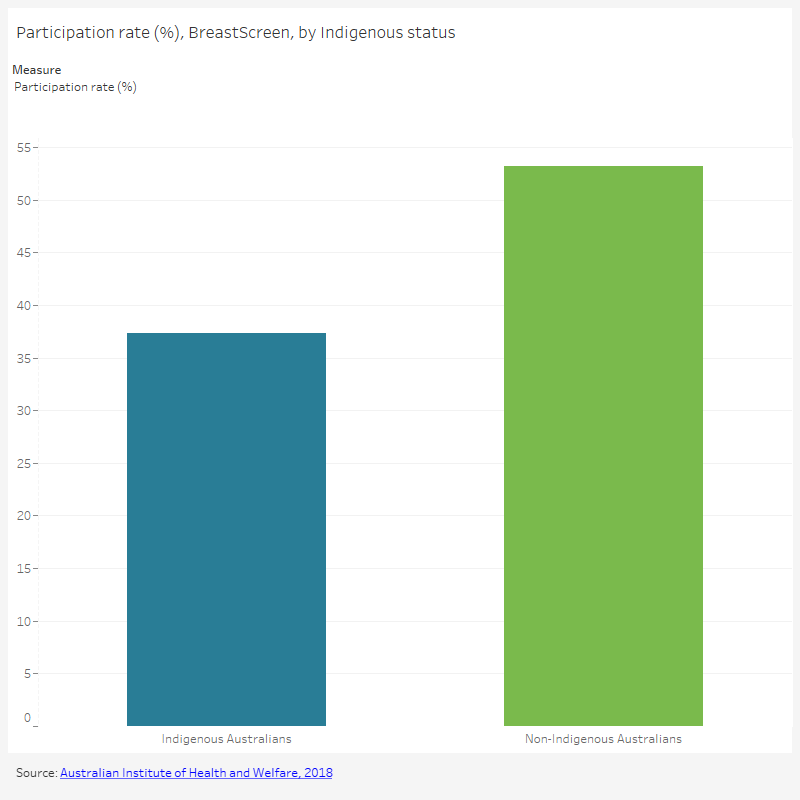Breast cancer (in females) (C50)
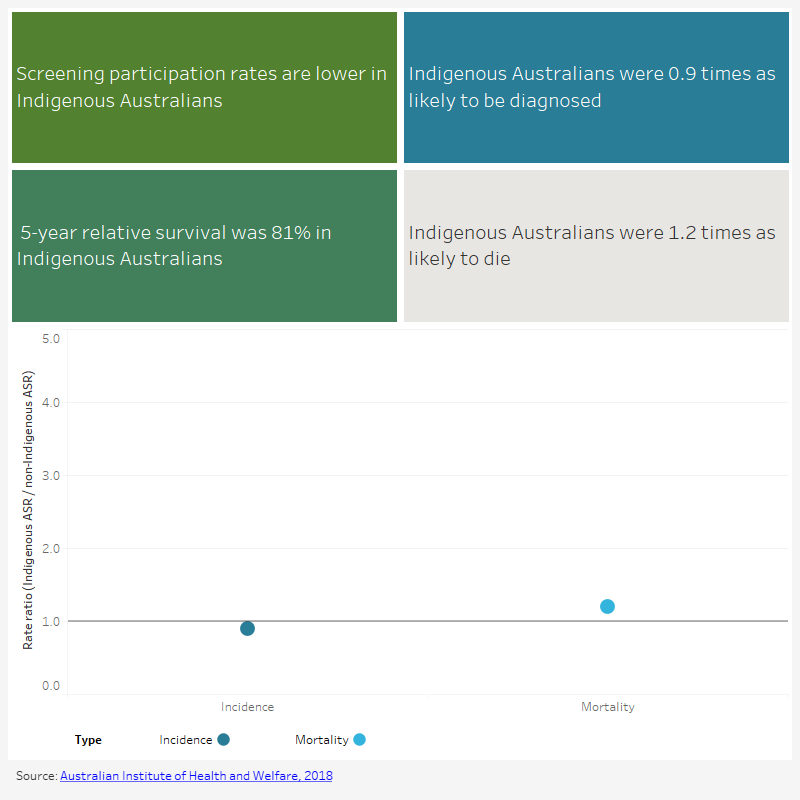
In 2009–2013, 771 new cases of breast cancer (in females) were diagnosed in Indigenous Australians—an average of 154 cases per year. In 2011–2015, 171 Indigenous Australians died from breast cancer—an average of 34 deaths per year.
In 2007–2014, Indigenous Australians diagnosed with breast cancer had an 81% chance, on average, of surviving for five years compared with their counterparts in the Indigenous population. Non-Indigenous Australians diagnosed with breast cancer had a 90% chance, on average, of surviving for five years compared with their counterparts in the non-Indigenous population.
Participation in BreastScreen Australia has a direct effect on the incidence of breast cancer, while participation and additional factors come into play for mortality from breast cancer, such as the stage of cancer at diagnosis and access to treatment.
Explore the data below for information on incidence (2009–2013), mortality (2011–2015) and relative survival (2007–2014).
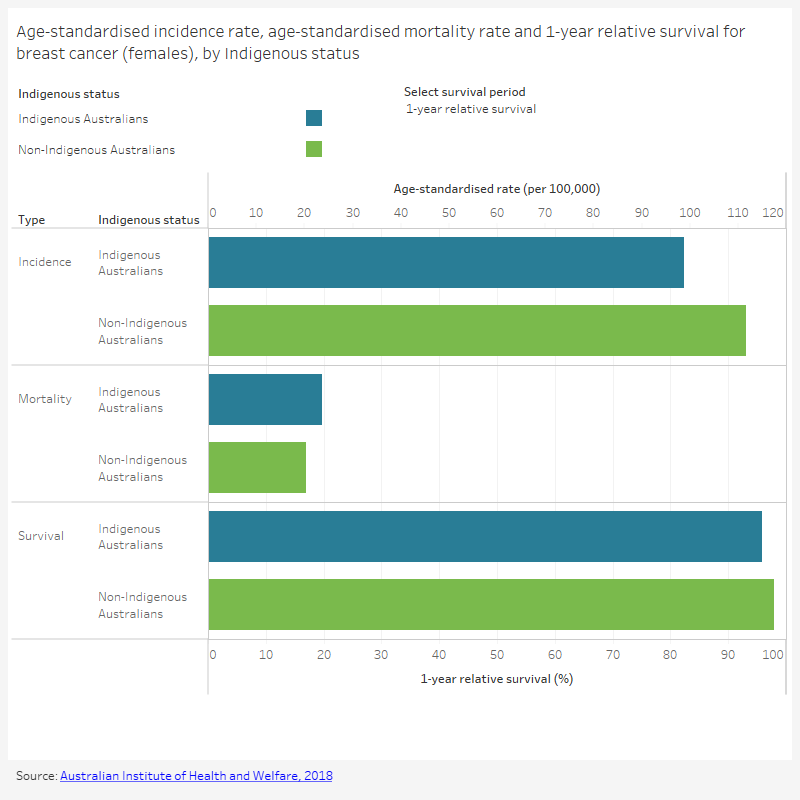
Life stage
For both Indigenous and non-Indigenous Australians, the age-specific incidence and mortality rates for breast cancer increased with each life stage.
For Indigenous Australians, five-year relative survival was lowest in life stage 25–44 and increased with life stage. For non-Indigenous Australians, five-year relative survival was similar for life stage 15–24, 25–44 and 45–64 and decreased in life stage 65 or older.
Explore the data below for information on incidence (2009–2013), mortality (2011–2015) and relative survival (2007–2014) by sex, Indigenous status and life stage.
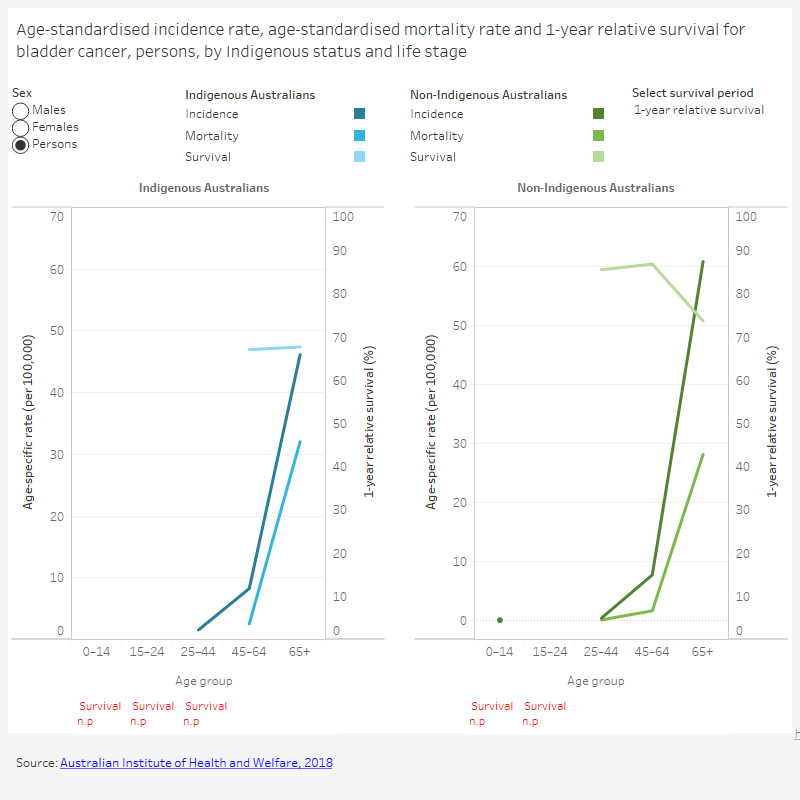
Trend
For Indigenous Australians, the age-standardised incidence and mortality rates for breast cancer both varied over time. No statistically significant increasing or decreasing trend was observed in the breast cancer incidence rate for Indigenous Australians from 1998 to 2013 and mortality rate for Indigenous Australians from 1998 to 2015.
For non-Indigenous Australians during this period, the age-standardised incidence rate for breast cancer increased, while the mortality rate decreased. Estimated trend lines indicate a significant increase in the breast cancer incidence rate and a significant decrease in the breast cancer mortality rate for non-Indigenous Australians.
Data for individual years have been presented for trend figures to demonstrate the variation in rates from year to year. Estimated trend lines have been applied to figures based on a least-squares regression equation where trends were found to be statistically significant. Differences between the rates for Indigenous and non-Indigenous Australians may be related to a range of factors including differences between the two populations in the prevalence of risk and/or protective factors such as smoking, alcohol consumption, access to health-care services and uptake of screening and diagnostics testing.
Explore the data below for information on incidence and mortality by sex, Indigenous status and year.
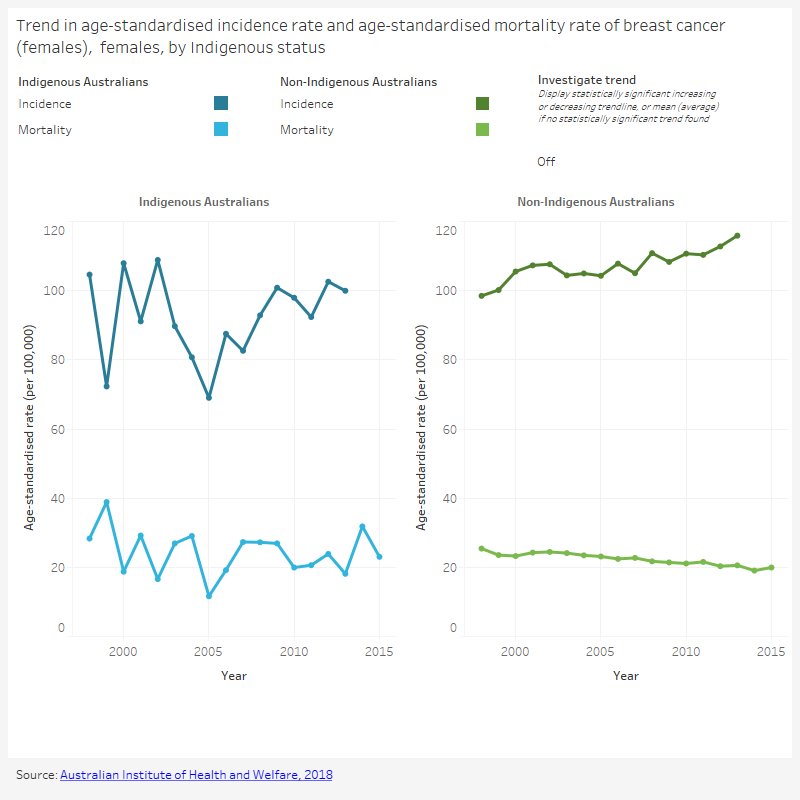
State and territory
For the jurisdictions for which data were available (see Summary or Notes section for details), the age-standardised incidence rate for breast cancer ranged from 79 new cases per 100,000 to 108 per 100,000 for Indigenous Australians. For non-Indigenous Australians, the incidence rate ranged from 106 per 100,000 to 118 per 100,000.
For the jurisdictions for which data were available (see Summary or Notes section for details), the age-standardised mortality rate for breast cancer ranged from 5.7 deaths per 100,000 to 41 per 100,000 for Indigenous Australians. For non-Indigenous Australians, the mortality rate ranged from 19 per 100,000 to 21 per 100,000.
Observed differences may be due to differences in population characteristics, for example, Indigenous Australians are more likely to live in remote areas of Australia than non-Indigenous people.
Explore the data below for information on incidence (2009–2013) and mortality (2011–2015) by sex, Indigenous status and state and territory.
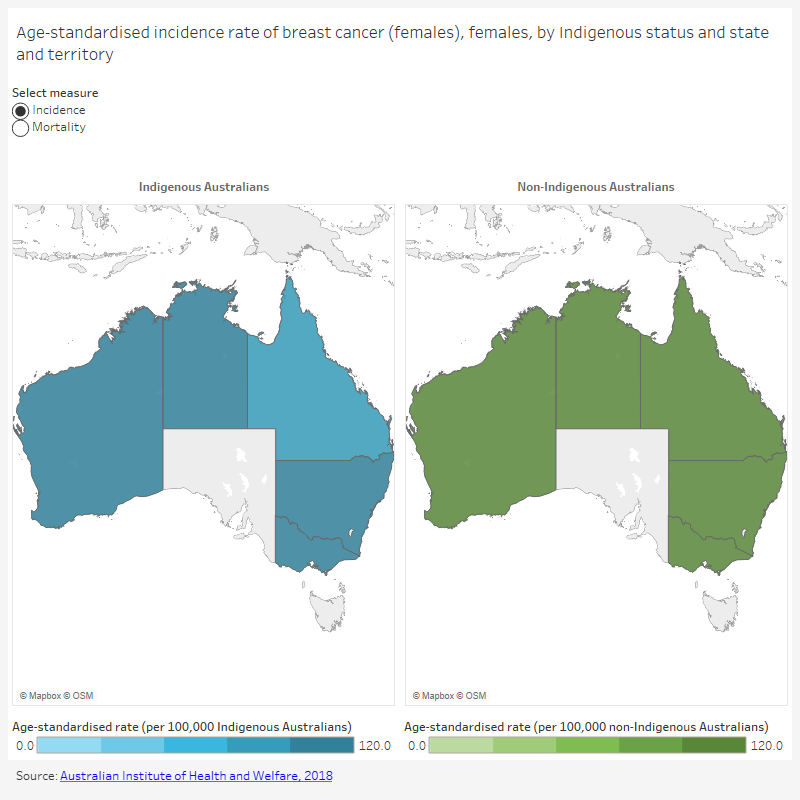
Remoteness area
For Indigenous Australians, the age-standardised incidence rate for breast cancer ranged from 40 per 100,000 to 51 per 100,000 across remoteness areas. The age-standardised mortality rate for breast cancer ranged from 9.7 per 100,000 to 15 per 100,000 across remoteness areas.
For non-Indigenous Australians, the age-standardised incidence rate for breast cancer ranged from 39 per 100,000 to 54 per 100,000 across remoteness areas. The age-standardised mortality rate for breast cancer ranged from 5.6 per 100,000 to 9.4 per 100,000 across remoteness areas.
Explore the data below for information on incidence (2009–2013) and mortality (2011–2015) by sex, Indigenous status and remoteness area.
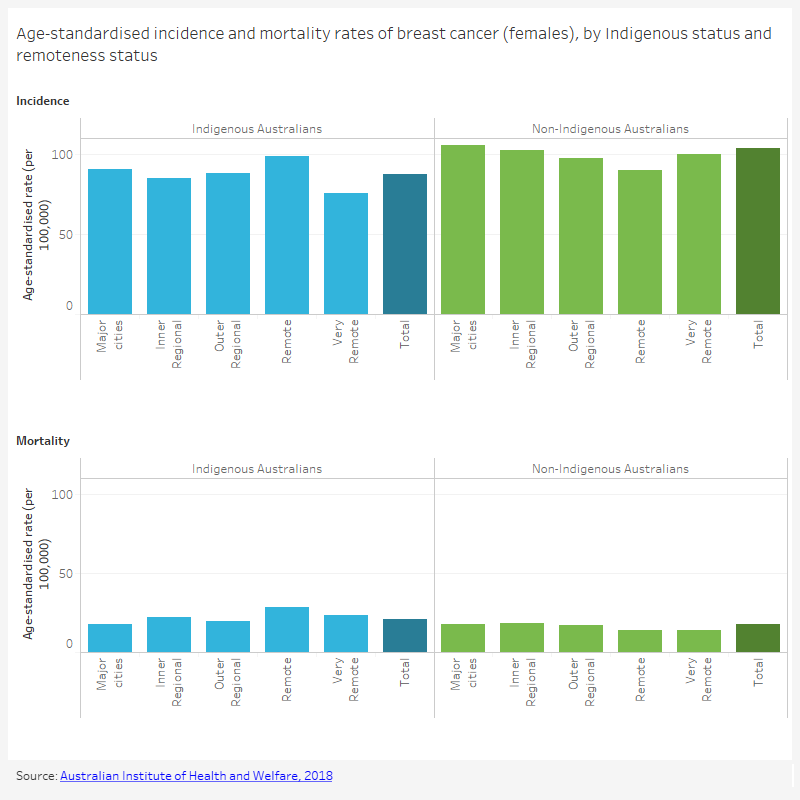
BreastScreen Australia
In 2014–2015, Indigenous Australians aged 50–74 participated in BreastScreen Australia at a lower rate than non-Indigenous Australians.
There may also be a level of under-reporting of Indigenous status in BreastScreen data (as Indigenous status is self-reported by women at the time of their screen and some Indigenous women may not self-identify), which would also have the effect of lowering the apparent participation rate.
Explore the data below for information on BreastScreen Australia indicators.
